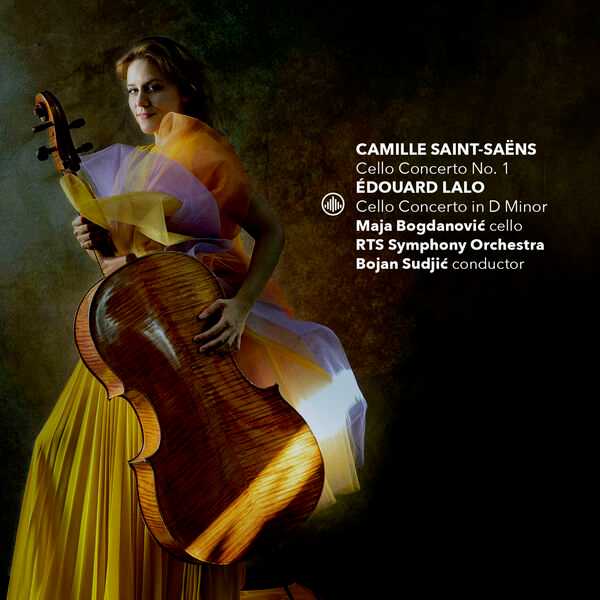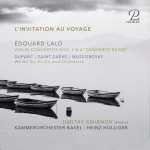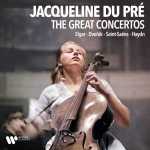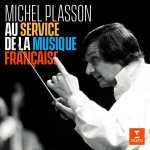
Composer: Edouard Lalo, Charles Camille Saint-Saëns
Performer: Maja Bogdanović
Orchestra: RTS Symphony Orchestra
Conductor: Bojan Sudjić
Format: FLAC (tracks)
Label: Challenge Classics
Catalogue: CC72949
Release: 2023
Size: 253 MB
Recovery: +3%
Scan: cover
Saint-Saëns: Cello Concerto No. 1, Op. 33
01. I. Allegro non troppo
02. II. Allegretto con moto
03. III. Molto allegro
04. Saint-Saëns: Le carnaval des animaux: Le Cygne
05. Saint-Saëns: Allegro Appassionato in B minor Op. 43
Lalo: Cello Concerto in D minor
06. I. Prélude. Lento — Allegro maestoso
07. II. Intermezzo. Andantino con moto — Allegro presto
08. III. Introduction. Andante — Allegro vivace
The two concertos on this release by cellist Maja Bogdanovic are standards of the repertory; as Bogdanovic notes, they were staples of her French conservatory training and competition regime, but Bogdanovic has what it takes to stand out. Enjoy the cover image, for it gives a taste of this cellist’s confident flamboyance. There are two shorter pieces by Saint-Saëns as an entr’acte, and one could begin by sampling those; the familiar Swan from The Carnival of the Animals has a rare warmth, and the Allegro appassionato, Op. 43, an infectious swing. The concertos, virtuoso works, are both accurately played, with the kind of interaction between soloist and orchestra that comes only when the performers know each other well. The Cello Concerto in D minor, especially as it descends into low-register snarls, has a rare kind of command over the listener. A negative here is the sound, which is not usually a problem with the Challenge Classics label; Bogdanovic is placed up front in the mix, which supports her interpretation, but the Kolarac Concert Hall gives her instrument an unpleasant edge in louder passages. Additionally, there is a burst of what seems to be street noise near the beginning of the first movement of the Lalo concerto, but it is worth putting up with these issues, for this album reveals to the world an arch-Romantic cellist who is still on the way up.
Maja Bogdanovic’s interpretation of these cello concertos is imbued with her Slavic background, emphasising the passionate and tragic character of both works. Thanks to the perfect chemistry between her and the Serbian conductor and orchestra, the result is a dazzling and unique performance, providing a brand new insight into two famous works and, most importantly, the feeling of attending a live concert.
Charles-Camille Saint-Saens marked his time in a special way as one of the greats of the Romantic era in France. In 1872, Saint-Saens composed his first concerto for cello and orchestra, which belongs to the creative period in which the composer devoted himself to researching the limits of expression of the instrument.Known for the traditional form of his compositions, Saint-Saens composed the concerto in three movements; however, he made it possible for the conductor to plan the performance so that they progress seamlessly as a unique whole, conceived through three separate sections.He achieved this by interweaving similar thematic materials within the sections, mostly at the level of orchestral transformation.
Saint-Saens’ Allegro appassionato, composed for the cello and orchestra, is certainly one of the most beautiful compositions in the Romantic literature for the cello. This piece was written in 1876. It is assumed that it was composed with the idea of being performed as an “encore”.
The composer Edouard Lalo (1823-1892), a contemporary of Saint-Saens, is another interesting figure of the French Romantic period. The Cello Concerto in D minor is today much loved by cellists around the world. Lalo composed it in 1877, in collaboration with the Belgian cellist Adolf Fischer, to whom he dedicated the work and who premiered it in the same year with great success. Although there is no explicit use of Spanish folk melody in it, the rhythmic and melodic characteristics of the musical material suggest the temperamental spirit of that country.
“The Saint-Sa?ns concerto shines in new colors in a vital and particularly flexible interpretation. Bogdanovic’s enchantingly lyrical but always excitedly communicative playing is in constant dialogue with the orchestra. Even in the Lalo concerto, this results in a fine performance full of style and substance ? a masterstroke” ? Pizzicato



